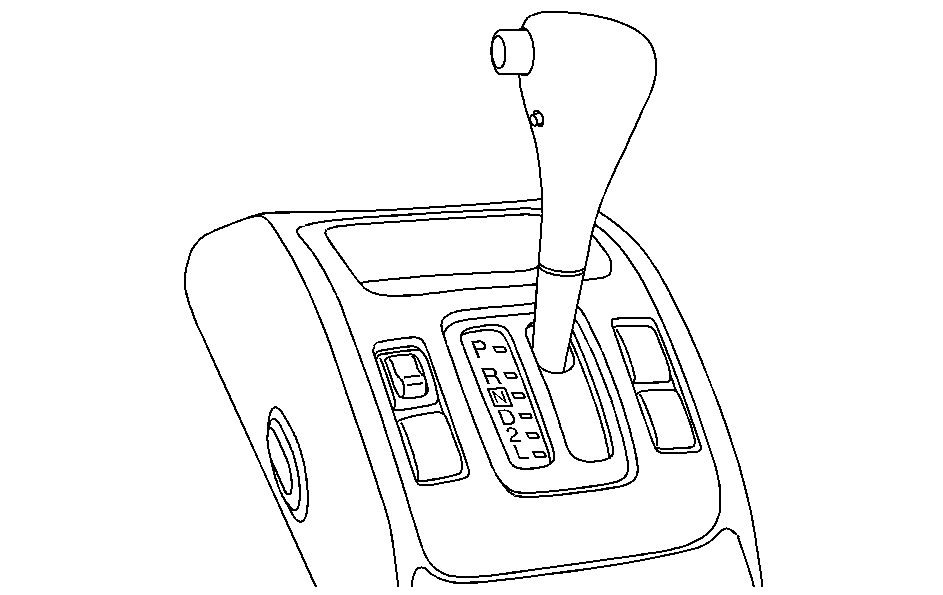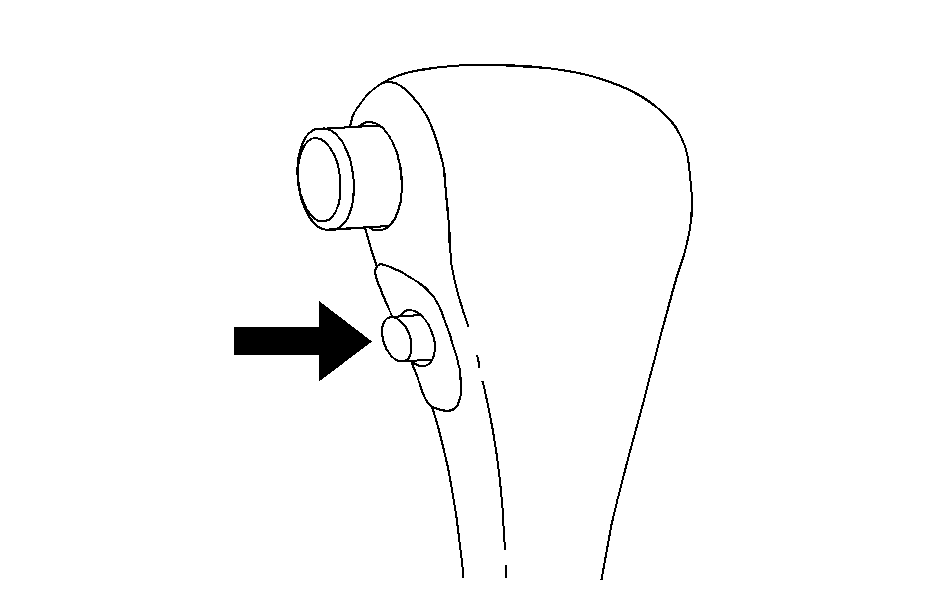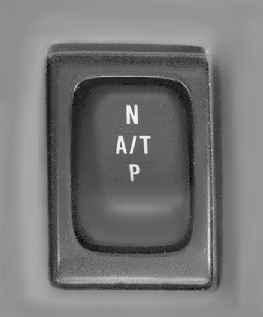There are several different positions for your shift lever.

PARK (P): This position locks your rear wheels. It's the best position to use when you start your engine because your vehicle can't move easily.
Caution: It is dangerous to get out of the vehicle if the shift lever is not fully in P (Park) with the parking brake firmly set. The vehicle can roll.
Do not leave the vehicle when the engine is running unless you have to. If you have left the engine running, the vehicle can move suddenly. You or others could be injured. To be sure the vehicle will not move, even when you are on fairly level ground, always set the parking brake and move the shift lever to P (Park). See Shifting Into Park . If you are pulling a trailer, see Towing a Trailer .Caution: If you have four-wheel drive, your vehicle will be free to roll -- even if your shift lever is in PARK (P) -- if your transfer case is in NEUTRAL. So, be sure the transfer case is in a drive gear, two-wheel high (2H) or four-wheel high (4H) or four-wheel low (4L) -- not in NEUTRAL. See Shifting Into Park .
Ensure the shift lever is fully in PARK (P) before starting the engine. Your vehicle has an automatic transmission shift lock control system. You have to fully apply your regular brakes before you can shift from PARK (P) while the ignition key is in ON. If you cannot shift out of PARK (P), ease pressure on the shift lever, then push the shift lever all the way into PARK (P) and release the shift lever button as you maintain brake application. Then press the shift lever button and move the shift lever into the gear you wish. See Shifting Out of Park .
REVERSE (R): Use this gear to back up.Notice: Shifting to R (Reverse) while the vehicle is moving forward could damage the transmission. The repairs would not be covered by the vehicle warranty. Shift to R (Reverse) only after the vehicle is stopped.
To rock your vehicle back and forth to get out of snow, ice or sand without damaging your transmission, see If Your Vehicle is Stuck in Sand, Mud, Ice, or Snow .
NEUTRAL (N): In this position, your engine doesn't connect with the wheels. To restart when you're already moving, use NEUTRAL (N) only. Also, use NEUTRAL (N) when your vehicle is being towed.Caution: Shifting into a drive gear while the engine is running at high speed is dangerous. Unless your foot is firmly on the brake pedal, the vehicle could move very rapidly. You could lose control and hit people or objects. Do not shift into a drive gear while the engine is running at high speed.
Notice: Shifting out of P (Park) or N (Neutral) with the engine running at high speed may damage the transmission. The repairs would not be covered by the vehicle warranty. Be sure the engine is not running at high speed when shifting the vehicle.
DRIVE (D): This position is for normal driving.If you need more power for passing, and you're:
| • | Going less than about 15 mph (25 km/h), push your accelerator pedal about halfway down. |
| • | Going about 15 mph (25 km/h) or more, push your accelerator pedal all the way down. |
| You'll shift down to the next gear and have more power. |
Don't shift into SECOND (2) unless you are going slower than 63.4 mph (102 km/h) with the transfer case in FOUR-WHEEL HIGH (4H) and TWO-WHEEL HIGH (2H), or 34.9 mph (56.2 km/h) with the transfer case in FOUR-WHEEL LOW (4L). If you move the shift lever to a lower gear while driving faster than the maximum allowable speed for the lower gear, the transmission will not downshift until your speed drops below the maximum speed for the lower gear.
LOW (L): This position gives you even more power but lower fuel economy than SECOND (2). You can use it on very steep hills, or in deep snow or mud. If the shift lever is put in LOW (L), the transmission won't shift into low gear until the vehicle is going slow enough.Don't shift into LOW (L) at speeds above 28.0 mph (45.0 km/h) with the transfer case in FOUR-WHEEL HIGH (4H) or TWO-WHEEL HIGH (2H), or at speeds above 15.4 mph (24.8 km/h) with the transfer case in FOUR-WHEEL LOW (4L). If you move the shift lever to a lower gear while driving faster than the maximum allowable speed for the lower gear, the transmission will not downshift until your speed drops below the maximum speed for the lower gear.
Notice: Spinning the tires or holding the vehicle in one place on a hill using only the accelerator pedal may damage the transaxle. If you are stuck, do not spin the tires. When stopping on a hill, use the brakes to hold the vehicle in place.
Overdrive Off

If your vehicle has this feature, the overdrive-off button is located on the left side of the shift lever. When operating under normal conditions, the vehicle will automatically default to overdrive when initially started until it is disengaged. If overdrive is turned off and the vehicle is turned off, when the vehicle is restarted, overdrive will automatically turn back on. By operating the overdrive off button, with the ignition in the ON position, the four-speed automatic transmission (three-speed plus overdrive) can be converted to a three-speed automatic transmission. While in the three-speed mode, the transmission will not shift into the overdrive position.
To convert the transmission to the three-speed mode, press in the overdrive-off button and release it. The OD/OFF indicator light on the instrument panel cluster will come on. The overdrive-off button is for normal driving. However, it also offers more power and lower fuel economy than driving in the overdrive position. Here are some times you might choose to drive with the overdrive-off button engaged:
| • | While driving on hilly, winding roads. |
| • | While going down a steep hill. |
To return the transmission to the four-speed mode, press in the overdrive-off button again. The OD/OFF indicator light will go off. Disengaging the overdrive-off button is for normal driving with the four-speed automatic transmission. If you need more power for passing, and you are:
| • | Going less than about 35 mph (55 km/h), push your accelerator pedal about halfway down. |
| • | Going about 35 mph (55 km/h), push your accelerator all the way down. |
If the transfer case shift lever is in the 4L position, the four-speed automatic transmission will remain in the three-speed mode.
Power Mode

A power mode selector switch is included with the four-speed automatic transmission.
When you need more power for climbing hills or quicker acceleration, press the P (power) switch. The POWER indicator light on the instrument panel cluster will come on. For normal driving, press the N (normal) switch. The POWER indicator light will go off.
The power mode delays the automatic transmission shift points to allow for higher engine speeds in each gear. The automatic transmission also has the ability to provide SECOND (2) gear starts for improved traction on slippery surfaces. The power mode selector switch must be in the P mode and the transmission shift lever in SECOND (2), which will remain in SECOND (2) until you shift the vehicle to DRIVE (D).
